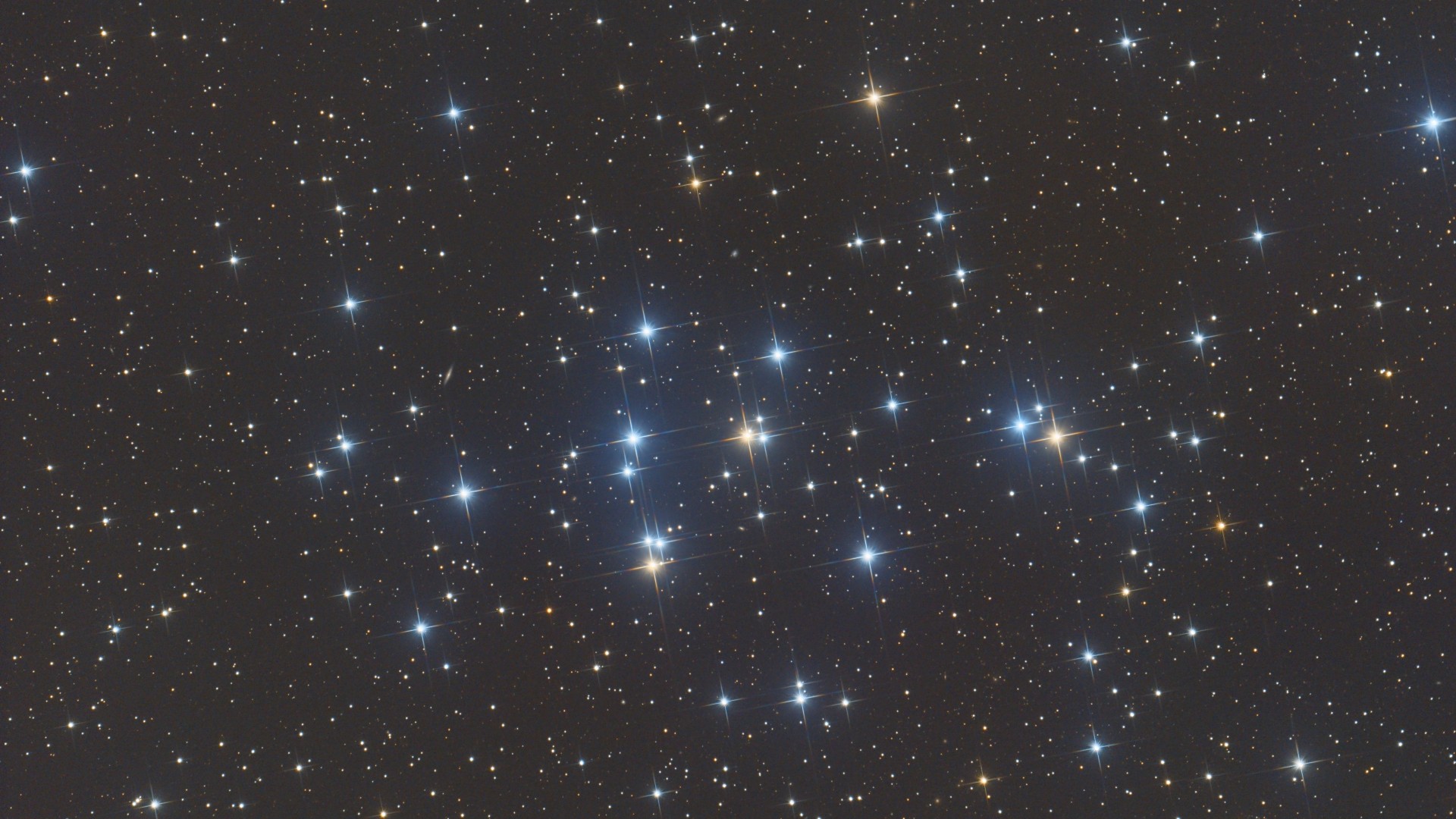
Mars is about to spend two nights moving across the Beehive Cluster, one of the most spectacular open clusters of stars in the night sky.
An open cluster is a loosely bound group of stars that have formed together; these clusters are commonly found in spiral galaxies such as the Milky Way, according to the European Space Agency.
The Beehive Cluster's 1,000 stars formed just 600 million years ago; for comparison, the sun is about 4.5 billion years old. The cluster — also called Messier 44 (M44), NGC 2632 and Praesepe (Latin for "manger") — sits about 600 light-years from the solar system, according to NASA, which means the light you see left the stars about 600 years ago. Mars is currently 187.5 million miles (301.8 million kilometers) from Earth, which is almost 17 light-minutes, according to Starry Night.
The Beehive Cluster will appear to be visited by Mars over two nights and will be best seen in the western night sky a couple of hours after sunset. The planet will be closest to the center of the cluster this Friday (June 2). That's sure to be a colorful event for astrophotographers, who will be able to catch the Red Planet among the 1,000 blue and yellow stars of M44. Mars also will be very close to the cluster this Thursday (June 1); by Saturday (June 3), however, the Red Planet will be significantly beyond the cluster's boundaries.
If you use a pair of good stargazing binoculars, you will be able to see about 20 stars in the Beehive Cluster, according to The Binocular Sky, though an astrophotography camera will pick up more. A stargazing telescope will also serve you well.
A naked-eye object in dark skies, the Beehive Cluster is about the width of three full moons in the night sky and is found in the faint constellation Cancer, the crab. According to the Farmers' Almanac, Cancer is the dimmest of the 13 constellations of the zodiac — the apparent path of the sun across the celestial sphere over the course of the year.
A few weeks after Mars' encounter with the Beehive Cluster, another, brighter planet will appear to pay a visit. On June 13, Venus will move across the outskirts of the open cluster. Although it won't seem as close to the center of the Beehive Cluster as Mars did, it will shine much brighter, making it a more dramatic sight to the naked eye.







